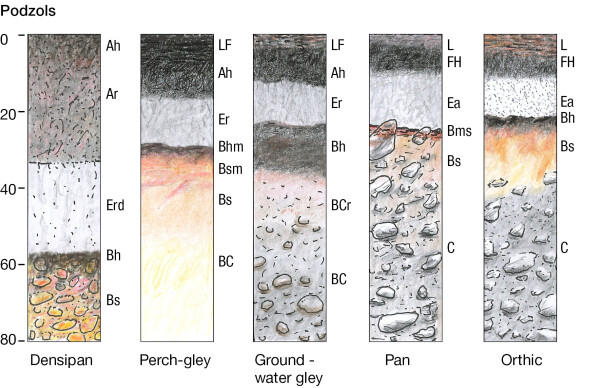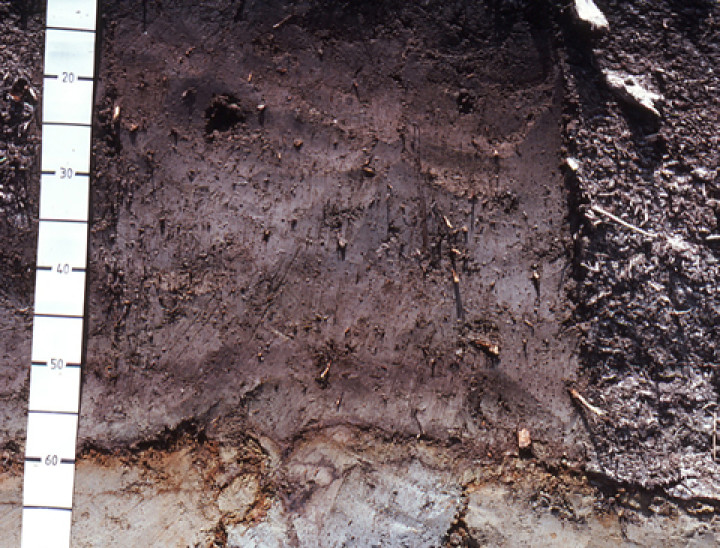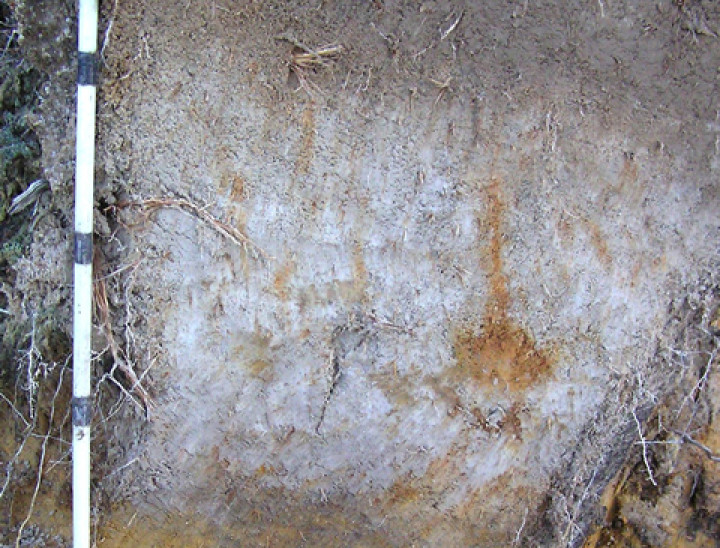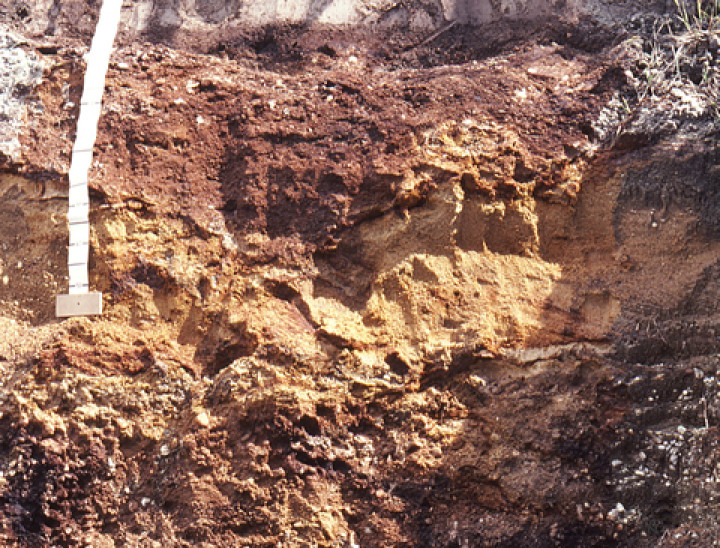Podzols [Z]
- Home
- » Topics
- » Soil classification
- » NZSC
- » Soil orders
- » Podzols [Z]
The impressive contrast in horizons displays the potent effect that particular tree species, for example Kauri, can have on soil formation
Podzol soils are strongly acid soils that usually have a bleached horizon immediately beneath the topsoil. This horizon is the source of aluminium and iron oxides that have accumulated, in association with organic matter, in an underlying dark or reddish coloured horizon.
Occurrence
Podzols occur in areas of high rainfall and are usually associated with forest trees with an acid litter. The soils occur mainly in materials from silica-rich rocks. They cover 13% of New Zealand.
Physical properties
Cemented or compacted B horizons are common, with associated slow permeability and limited root depth. E and B horizons are weakly pedal or lack pedality.
Chemical properties
Podzols have low natural fertility, low base saturation, and are strongly acid. Secondary oxides and other clay minerals are strongly differentiated with depth.
Biological properties
Podzols have low biological activity. The vegetation comprises plants that deposit a mor-forming acid litter.
Soil groups
Soil orders are divided into soil groups based on variation in factors such as drainage status, parent material, chemical and physical properties:
- [ZD] Densipan Podzol Soils — high density, pale coloured, pan just beneath the topsoil
- [ZP] Perch-gley Podzol Soils — periodic wetness caused by a perched water table
- [ZG] Groundwater-gley Podzol Soils — periodic wetness caused by groundwater table
- [ZX] Pan Podzol Soils — with a subsoil-cemented pan
- [ZO] Orthic Podzol Soils — other Podzols



